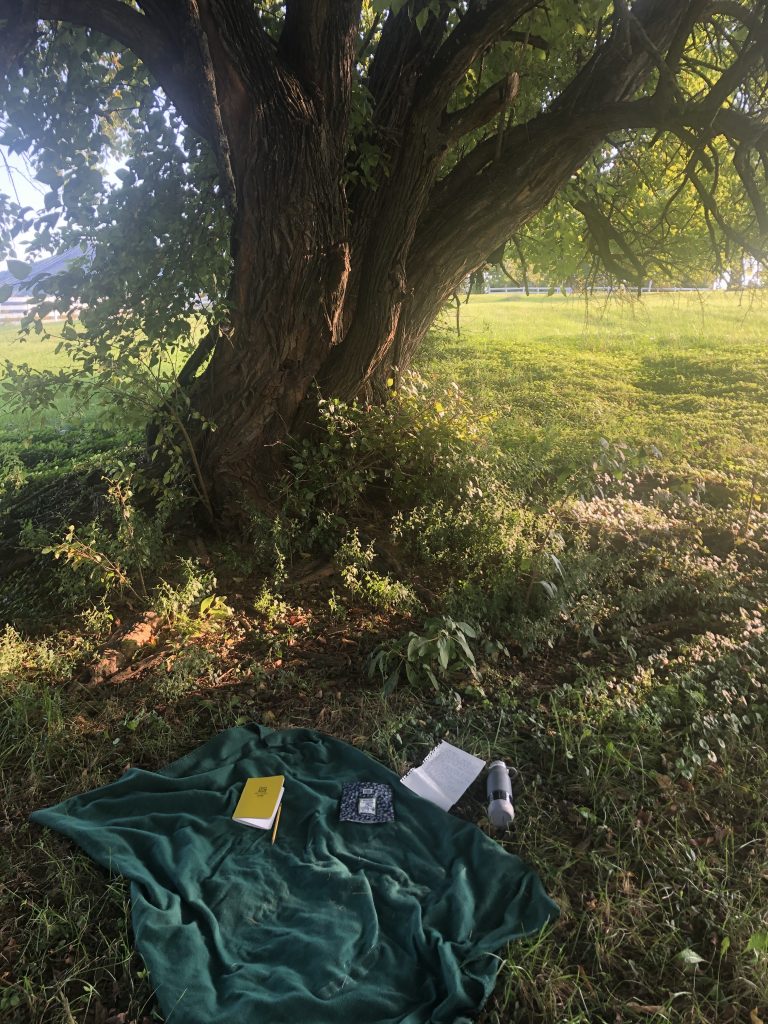
My Sit-Spot 9/23- 7:45am
My sit spot lay on the almost-crescendo of a hill near the horse barn, close to the loop road. If one were to walk up the hill towards the barn, my sit spot is to the left, where I sit under the protective and guised canopy of the large and comforting tree; my sit-spot. When sitting down and facing between, from my perspective, the down hill road, and the parking lot below, to the right of me is a white fencing that boundaries a field that sometimes contain horses. Although near foot-traffic, between the early hours I show up, and the long and veiling canopy of leaves, I get the secluded experience of the sit-spot, easily. When walking around the tree, I got to see things I didn’t imagine would end up just being a few feet away. The little clover like plants were thicker and everywhere, so much so I didn’t want to walk near in fear of crushing a whole bunch of them. But we will go into more detail about what lie on the other side of the tree in a few paragraphs.
For my three things I decided to follow over time – the partly eaten leafy plant, the bark on the tree, and the leaves forming the canopy – they have not changed in the ways I thought.
1.) The leafy plant was just as I had left it, (the one I drew in the first sit-spot journal entry). The bite marks were exactly the same with no new ones in sight. However another one of the leaves on the plant had been eaten almost completely through. The color was still a great green, but with perhaps some very subtle hints of yellow.
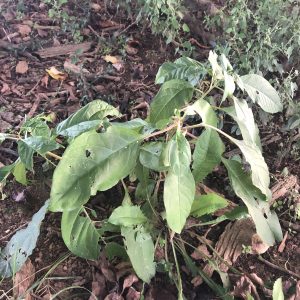
Still Half-Eaten Leafy Plant
2.) As for the bark on the tree, which I had expected much to no change, had changed quite a bit. The grey string-cheese like bark had peeled, and it looked like it had gone through the rough of it. More of the brown underlay was peaking through, and it looked as if a superficial hole was forming.

Could be Worse For Wear..
3.) As for the leaves on the canopy, they were what I expected, as in fall is starting it’s tremendous change in the almond shaped leaves. While many were still green, a good majority were lighter, and yellow as well. And after some good scanning, I had found a whole bunch of dried up dead leaves.

The Leaves Are Turning
Now onto what I’m sure we’ve all been waiting for since that first riveting hook about what was behind the highly textured grey faced tree. Getting up, as per instructed, I was surprised that I hadn’t looked behind it before, but was happy that I did, for there was an amazing root system with vines and plants wrapped around and growing out it through the spaces. There was also some yellow leaves that lie there all in perfect harmony. I decided to examine this because it was so beautiful and amazing to see how nature fit into each other so effortlessly.
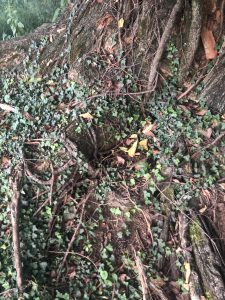
Amazing Root System!
And if I hadn’t observed this site, I wouldn’t have noticed the vines that not only wrapped around the amazing little root ecosystem, but how they travelled and grew thicker as they started to look more like ropes thickly traveling up the side of the tree; all the way to the top.
Walking around my site and further examining things made me remember that there’s always more right around the corner, if one only remember to look. Yes, that vaguely resembles the quote from Harry Potter that Dumbledore says; lets move on. I had been to this spot multiple times and there I sat, not bothering to wonder about what was right there beside me, that with only a tilt of the body and a turn of the head, I could have seen sooner, this glorious site. I am not sure if I would have done this on my own, as I’ve been rather silly as of late, but I am most glad I did.
The three adaptions I observed was an oddly tall plant, the close to the ground clover-like plants in the understory, and some of the leaves in the canopy. I believe the oddly tall plant to be as tall as it was, as being under a shaded canopy it has only a hour or so in the early morning to get sun. This is because of the thick and close to the ground canopy, which can be thwarted by the other plants as well. To address this challenge, I believe the plant had to grow taller to better reach the suns rays. As for the close to the ground clover-like plants, I believe them all to be so close to the ground, because being under a very thick canopy, they may not get a lot of rainfall, so to combat this, growing closer to the ground, water has less distance to travel to get into the plant’s xylem elements. And last, the leaves on the outer canopy, get a lot of sun, especially in hot Virginia, and have adapted a glossy and thicker characteristic to the leaves. I believe this to be, so on hot days, water has a harder time precipitating out of the more reflective and denser leaf, than a thin one. These came right to me, as when reading the chapter of plant adaptions, I really enjoyed relating these adaptions to things I’ve seen in the forest.
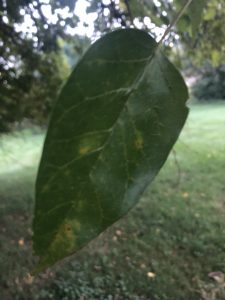
Glossy Leaf Adaption!

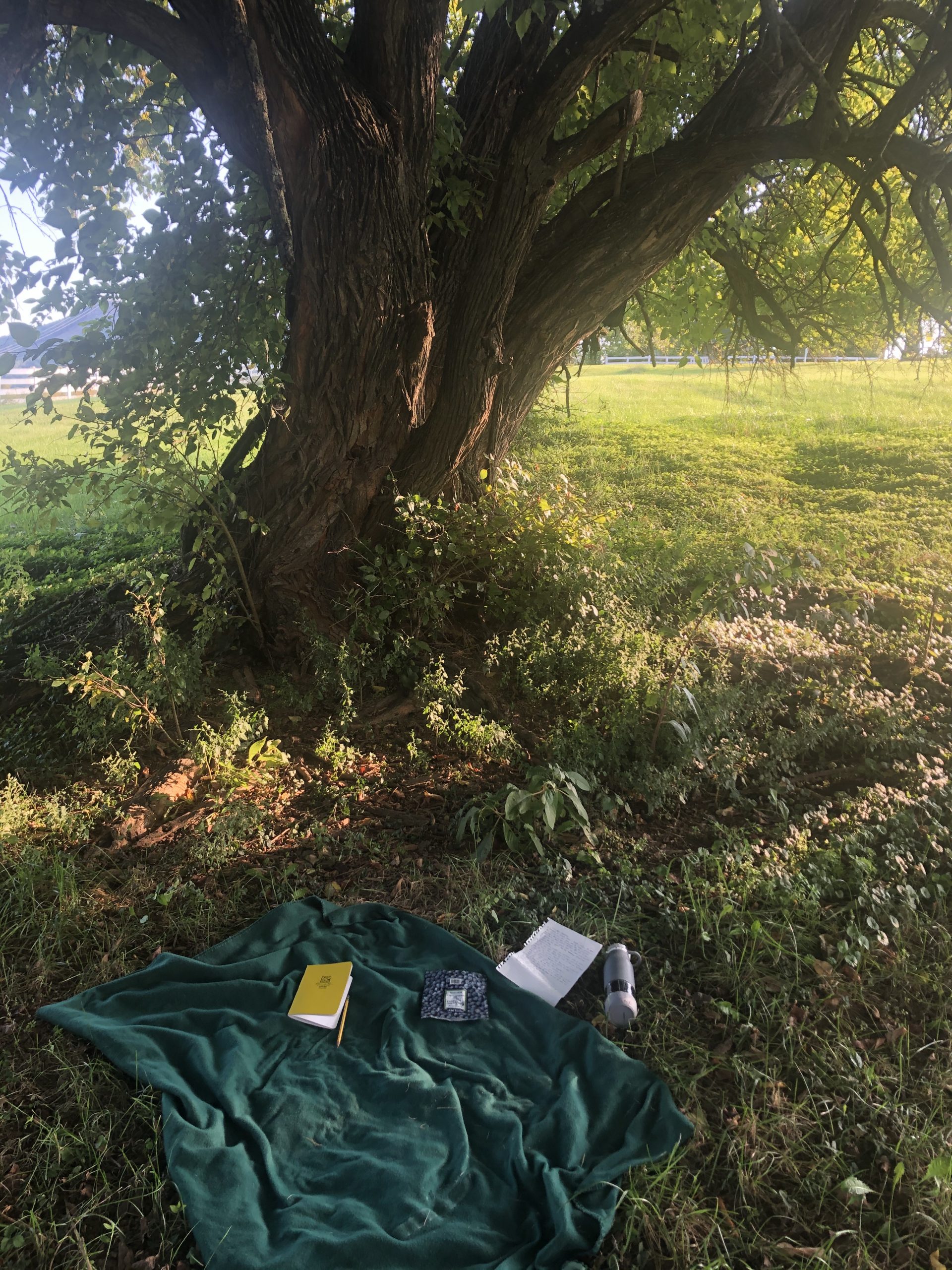
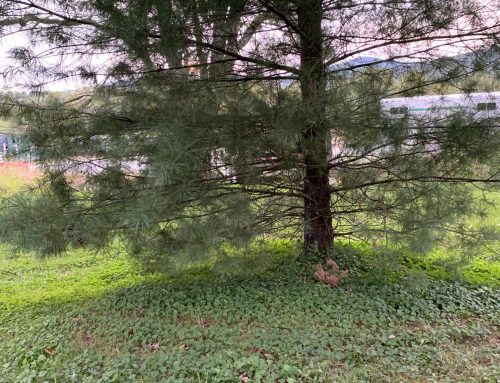
I really like how your sit-spot is so close to where I am always at! I love looking at the tree and am excited to see how it changes through into fall. I really liked your explanation on the leaf adaptations.
So much detail!! I love how you describe the tree as if we are able to picture the tree in our mind without looking at the picture you posted. The same goes for all the things you are observing over the course of this semester! Really nice post, makes me feel like I am sitting there!
The organizational flow of the post made it really nice to read and find all of the information for comparison. Additionally, the addition of a few modern topics makes it more of an engaging read for people who don’t always understand the scientific dialogue which can be a major issue in a lot of articles.
I noticed right of the bat that the leaves in your area are turning much quicker than the ones around my sit spot. That root system is also quite something, as my area has more vines and ivy taking over the roots and lower half of the trees. This is a very nice area with plenty to observe, and you got some great pictures!